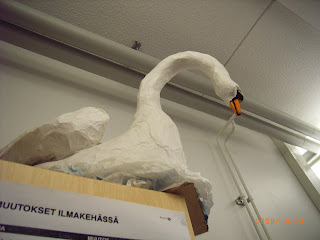There is a curious subject called Student Counselling in Finnish core curriculum. There are two Student Counsellors in every upper comprehensive school (Grades 7 to 9). What student counselling involves is to get students to start thinking about their future under certain guidance. In 7th grade, they learn how to learn. In 8th and 9th grades, they start considering their options for future. All ninth graders, and in some schools eighth graders also, obtain 2 weeks of work experience in some corporation, with a bit of help from schools. (I was told the community is generally very happy to cooperate in offering some unpaid internship opportunities). Each 9th grader gets to have a chat individually with the Student Counsellor and discuss his/her future path seriously.
The reason why that decision matters in Finland is after 9th grade, students split into two streams: high school VS technical school (roughly half half by statistics). High school is the general grammar stream, while technical school includes art, sports, design, hairdressing (and even plumbing I heard) etc. It's a lot harder to get into high school because they require stronger academic qualifications. But it is done on an absolute rather than competitive basis: in theory if you have demonstrated to be academically competent to handle high school and you want to do it, you will get a place. If you aren't ready yet, you can repeat a year and apply for high school again. In general only high school students can go to university.
This reminds me of how I made my decision to take science stream rather than arts stream in Grade 9 (ages ago). I made that choice without much thinking, but essentially for a few reasons: 1. science stream offered much wider choices in society and university subject choices; 2. the science classes were a lot better taught in my school; 3. Science subjects took less effort than arts subjects and i was quite lazy.
To a certain extent I regret that decision. While I think I only managed to come so far because I had taken science and got the grades, I would have liked arts subjects a lot more in retrospect.
The point I'm trying to make is that when young people make critical decisions in life, they rarely have the complete picture. It helps a lot to have someone go through the options and help them to make an 'informed' choice as far as possible.
On a more macroscopic level, this is essential to an efficient allocation of resources. Students are better informed about what they have to do in order to achieve their dreams. For example, if they want to be a designer, they need to take certain subjects in schools, that kind of thing. Opportunities are meaningless if they are not known and cannot be taken up by the 'right' people.
Having individual professional advice for everybody makes it more likely for students to know how to get to their desired paths of life.
I see this as a key aspect of the ability of Finnish education system to channel people into the right fields for them in society.
























































